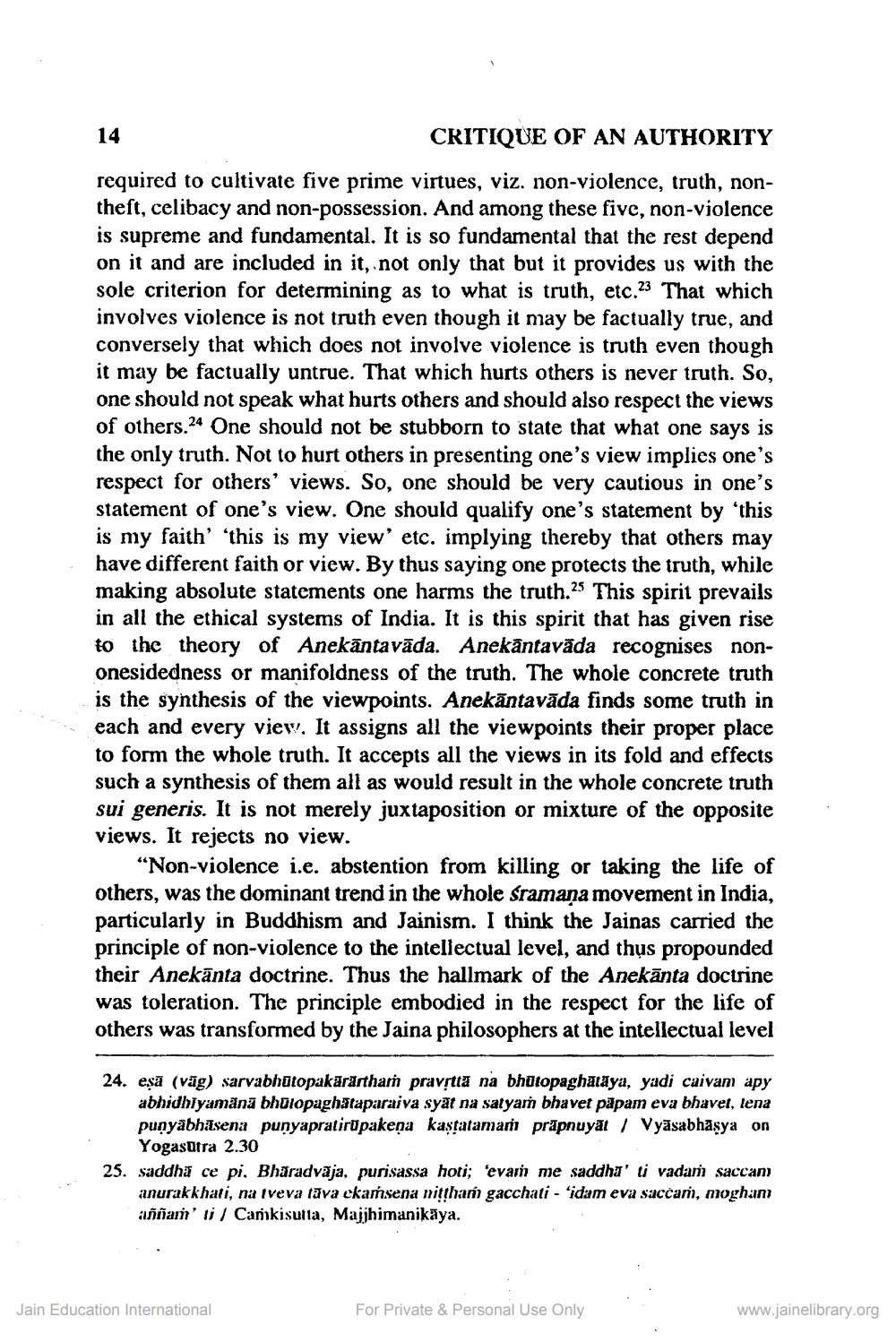________________
14
CRITIQUE OF AN AUTHORITY
required to cultivate five prime virtues, viz. non-violence, truth, nontheft, celibacy and non-possession. And among these five, non-violence is supreme and fundamental. It is so fundamental that the rest depend on it and are included in it, not only that but it provides us with the sole criterion for determining as to what is truth, etc.23 That which involves violence is not truth even though it may be factually true, and conversely that which does not involve violence is truth even though it may be factually untrue. That which hurts others is never truth. So, one should not speak what hurts others and should also respect the views of others.24 One should not be stubborn to state that what one says is the only truth. Not to hurt others in presenting one's view implies one's respect for others' views. So, one should be very cautious in one's statement of one's view. One should qualify one's statement by 'this is my faith' 'this is my view' etc. implying thereby that others may have different faith or view. By thus saying one protects the truth, while making absolute statements one harms the truth.25 This spirit prevails in all the ethical systems of India. It is this spirit that has given rise to the theory of Anekāntavāda. Anekāntavāda recognises nononesidedness or manifoldness of the truth. The whole concrete truth is the synthesis of the viewpoints. Anekāntavāda finds some truth in each and every view. It assigns all the viewpoints their proper place to form the whole truth. It accepts all the views in its fold and effects such a synthesis of them all as would result in the whole concrete truth sui generis. It is not merely juxtaposition or mixture of the opposite views. It rejects no view.
“Non-violence i.e. abstention from killing or taking the life of others, was the dominant trend in the whole sramana movement in India, particularly in Buddhism and Jainism. I think the Jainas carried the principle of non-violence to the intellectual level, and thụs propounded their Anekānta doctrine. Thus the hallmark of the Anekānta doctrine was toleration. The principle embodied in the respect for the life of others was transformed by the Jaina philosophers at the intellectual level
24. eşā (vāg) sarvabhūtopakārärtharn pravstta na bhutopaghatāya, yadi caivam apy
abhidhiyamänā bhulopaghataparaiva syat na satyam bhavet pāpam eva bhavet, tena punyabhasena punyapratirüpakena kastatamam prāpnuyat / Vyasabhasya on
Yogasutra 2.30 25. saddha ce pi, Bharadvāja, purisassa hoti; 'evan me saddha' ti vadam saccan
anurakkhati, na Iveva tava ekaṁsena nittham gacchati - 'idam eva saccam, mogham Giốĩain't / Canokisula, Majjhimanikaya.
Jain Education International
For Private & Personal Use Only
www.jainelibrary.org




